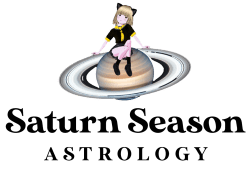Asteroid Astrology! While asteroids aren’t necessary to read a chart (the meat and potatoes will always be with the planets, the nodal axis, etc.), they can add another layer to chart weaving (and asteroids are also just A LOT of fun!). A friend of mine made the comment a while back that the incorporation of asteroids is like the fine tuning of an instrument, and I couldn’t agree more with this sentiment. As I’ve been going through my website (on the back-end cleaning things up), I noticed that while I have certainly written about certain asteroids (and have done even more videos for the YouTube channel on asteroids) I have never written about HOW to read asteroids in a natal chart….so that’s what this post is about. Obviously, this is an opinion piece, MY opinion on how to read asteroids in a chart. But! The way that I do this does resonate with clients, so I feel like I’m doing something right with the way that I approach reading the asteroids.
First of all, there are SO MANY asteroids to choose from in the asteroid databank, it can be overwhelming to figure out where to begin. If you are wanting to start fucking with asteroids but aren’t sure where to start, Chiron should be at the top of your list with which to look. Starting with some of the major ones to see where they land in your chart like the Asteroid Goddesses (Vesta, Pallas, Juno, and Ceres) might be a good way to enter the asteroid waters as well. If there is a certain character in mythology (or a historical figure) that you feel particularly drawn, pulling the asteroid for them (should one exist) might be where you start.
–As a sort of side note, I don’t even treat Chiron like an asteroid (I never have) 🤣 and I will pull it in EVERY client chart that I pull (so the stuff I am about to say about how I read asteroids, these “guidelines,” don’t apply to Chiron). It may not get mentioned or talked about in every reading that I do for clients (depends on what a client is coming to me for and/or the organic movement of the reading/the way that it goes), but Chiron always gets a few notes made about it in my notebook.
**You may feel the same way about another asteroid that I feel about Chiron. Definitely go with your intuition; if another one feels that important to you, definitely pull it in ALL the charts you look at (or as many as you want).
***The asteroids numbers for the Asteroid Goddesses mentioned above are as follows:
-Ceres is no. 1
-Pallas is no. 2
-Juno is no. 3
-Vesta is no. 4
This next part might piss some people off 😂 but this is generally how I approach asteroids:
1. Conjunctions get most of my focus when it comes to asteroids. Generally speaking, if I don’t see an asteroid conjunct a planet, the nodal axis, an angle, etc. the asteroid doesn’t usually stand out to me. The conjunction between an asteroid and a planet, the nodal axis, an angle, etc. is what makes the asteroid important and prominent in a chart (in my opinion).
**I would use an orb of no more than 3-degrees applying and separating for the above (this is my personal preference when reading; if you want to extend the orb further or bring it in tighter, by all means do it ^_^).
***Why does the above matter so much to me? Because if an asteroid is conjunct a planet (or angle, nodal axis, etc.), then the planet, etc. is a vehicle for that asteroid energy to flow through. For instance, let’s say Ceres is conjunct Jupiter in a chart. Ceres (and the things that she wants to express like nurturing and nourishing) are infusing Jupiter (and vice versa), quite literally being expanded upon. HOW this comes out depends on the sign of Ceres and Jupiter, and WHERE/AREAS OF LIFE that this comes out depends on the house that they fall in the chart.
2. Make sure to bring the planetary ruler of the asteroid into the equation when reading asteroids. Since Asteroids don’t rule anything (not officially anyway, though there are arguments for certain asteroids having certain rulership over some of the signs), you want to bring the asteroid’s rulership into play. For instance, let’s say you (or someone) has Ceres that is conjunct Jupiter within a degree in the chart – that’s a prominent Ceres! Let’s say that Ceres and Jupiter are in Libra. That would make Venus the planetary ruler of Ceres in this chart. Does Ceres make an aspect with Venus? If it doesn’t, I would consider this to be a neutral thing. However, if Venus makes an aspect with Ceres, it gives a strength to Ceres’ prominence and importance. The challenging aspects (the square, opposition, and quincunx) might put some stress on the prominence (and how the person’s Ceres functions). The harmonious aspects (the sextile and trine) might give some ease to the way that Ceres functions in the chart. Either way, if an aspect between an asteroid and the planetary ruler of an asteroid make an aspect in the chart, it gives the asteroid strength.
**The above should FOR SURE be considered if you are looking at an asteroid in the chart that doesn’t make a conjunction with a natal planet. For instance, let’s say you have Ceres in Libra and Ceres doesn’t conjunct a natal planet, angle, etc. (so it doesn’t appear to be very prominent). In a case like this you would want to see if Venus (the planetary ruler of Ceres in Libra) makes an aspect with Ceres (and what kind of aspect). If an aspect is made, it gives strength or importance to Ceres in Libra.
***The planetary ruler of an asteroid (by sign and house) should always be looked at and considered when reading asteroids regardless of what the asteroid is doing in the chart***
3. I don’t (usually) give a shit about a random asteroid trine/sextile/square/etc. another random asteroid in a natal chart (ex: asteroid Psyche trine asteroid DNA). From my years of practice (and even more years of study), I find that most of the time aspects between asteroids are “fine-tuning” or “backing up” other things already laid out in the chart. The only times that I don’t feel this way about aspects between the asteroids are as follows:
a) When you have asteroids conjunct one another. This MIGHT stand out to me due to the concentration of energy and it would stand out to me even more if we’re talking about a conjunction between asteroids making an aspect with the planetary ruler of the asteroids in the chart. For instance, if you have Psyche (asteroid no. 16) and DNA (asteroid no. 55555) conjunct one another in Scorpio and Mars and/or Pluto (planetary rulers of Scorpio) happen to aspect Psyche and DNA.
b) When asteroids that are part of a “pair” happen to aspect one another. For instance, let’s say you have Eros (asteroid no. 433) and Psyche making a square aspect in your chart. THIS would be an aspect between asteroids that I would take note since their individual mythology’s tie them together (they can absolutely be read separately, too).
**Keep the aspects between asteroids in a case like the above really tight (maybe 2-degrees applying or separating max. if even that much).
4. DO bring mythology and word meaning into play when looking at asteroids. This, in my opinion, is how you figure out how to read them in the first place. Want to read Pallas in your chart? Become familiar with her mythology. What was she like? What were her strengths and weaknesses? Look at the asteroids in a chart from the lens of “the light” and “the shadow” expressions of energy (because just the planets have a light and shadow, so do asteroids – nothing is universally “bad” or “good”).
-The same thing can be said about word (and name!) asteroids. For instance, there is an asteroid named “dick” (asteroid no. 17458). Lol obviously there isn’t a mythology behind “dick” (or maybe there is 🤣 who the hell knows) but think about what the word “dick’ means and translate it accordingly. For instance, let’s say you have the asteroid “dick” conjunct the Descendant in Taurus. This could maybe be translated as “the person might attract stubborn (Taurus) dicks into their life.” It could also be translated as “the person might be a stubborn dick and not want to acknowledge such about themselves.” (I make the last part of that comment since we are talking about the Descendant in this hypothetical case, and the Descendant can be a shadow part of ourselves that we know exists but don’t want to acknowledge, pay attention to, etc.).
5. Another thing to bring into play when reading asteroids is the orbit of the asteroid in question. What is its orbit like? For instance, I think of Chariklo (asteroid no. 10199) as wanting to express many different things, but boundaries are one of those things. The reason for this is not only because of her mythology but also because of her orbit between Saturn and Uranus, and how she never crosses over into either of Saturn or Uranus’ orbits (essentially, she “stays in her lane” and knows boundaries).
Here is a tip for getting started with asteroids: Don’t throw in every asteroid possible at once when looking at a chart. Do you know how overwhelming it is to look at a chart with 15 fucking asteroids thrown into the mix 🤪??!! Lololol I do this professionally and looking at a chart with that many asteroids thrown in makes my brain feel like it’s going to short circuit 😂. This doesn’t mean that you can’t look at several different asteroids, but I would start with a few (say, the Asteroid Goddesses…or something like that). After looking at those few, make notes of where they fall in your chart. Then take those that you’ve made notes on off the chart and enter a few more. Rinse a repeat. This way you’re only looking at where, maybe, 5 asteroids are at once versus 15. You’re also able to ascertain which ones are actually important to your chart (which ones deserve to get pulled again later).
Do you want another set of eyes on your chart? Book a reading with me (about asteroids or any kind of natal chart reading)!
Categories:
Tags:
Subscribe to my blog posts!
[subscribe2]


One response